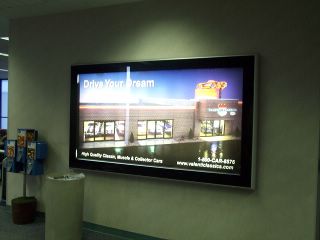A Ziff Davis' link sent me to a blog posting
Markl's Thoughts: Shipping Software. Mark Lucovsky is a former Microsoft "Distinquished Engineer" who had worked on the Windows NT kernel, and previously for DEC (presumably on the wonderful VMS operating system HP is in the process of killing). Mark has recently left to work for
Google.
He writes in this entry about how Microsoft "used to know how to ship software", and he seems to be in Email overload right now over this. The haters probably wanting to chime in with their own Microsoft war stories. The fan boys probably wanting to chastise him for saying anything negative about the empire. Mark's comments are interesting and first person, and they remind me of a joke (probably old, so forgive me) I heard at a developer's conference last week:
A developer was confronted by an angry manager about the constantly slipping ship date for a software project. "You know, its taking you months to get this code out the door. God built the entire world in 6 days.", the manager said. The engineer replied, "Yes, but he didn't have an installed base to deal with."
This was told by John McCormick of
InterSystems while explaining the challenges of the new security model for Cache 5.1.
Microsoft, of course, has the world's largest installed base. They need to deal with not upsetting that apple cart, while positioning to lock out other innovators and maintain their Windows/Office cash cow that keeps the whole house of cards up. All the while wondering what India and China and other emerging markets are going to do. It's no wonder it takes years for a specific line of code to get out the door. Others obviously have the same issue. Intuit, Lotus Notes, Oracle, etc. all certainly deal with trying to get product to customers that are cautious about the amount of work it takes to upgrade the existing data.
The pure new net-centric business models allow for instant publishing of changes. This is also the advantage of the start-up looking at existing product but getting to develop from scratch on new development tools. It seems normal for us to have a leapfrog effect of dominant product getting replaced by new dominant product over time. Microsoft has had a great run of it, as the control of the platform let's them control the pace of advancement. But Java, Linux, HTTP, emerging markets not wanting to be locked into US companies, and other pressures seem to be setting the stage for a more fundamental shift from the Intel/Windows centric computing we've become accustomed to.



